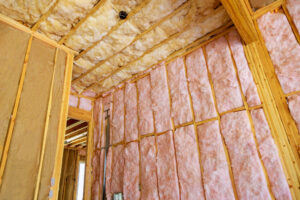Winter door insulation tips
Last updated on March 10th, 2024 at 03:33 pm
The most common complaint in the cold winter months about older doors is they are drafty, or don’t insulate well anymore. In fact, a door is usually one of the first places you tend to notice energy issues. The reason is because it is opened and closed and used so often. Add to this the fact that they are heavy and held up by only a few screws and hinges around a frame, and the potential for problems increases with age.
What can go wrong?
Even newer doors can have energy gaffes. One of the more common problems occurs when a door is not a standard size and must be trimmed, or cut, to fit properly. There is very likely an energy gap on at least a couple sides of the door.
If the doorway is sloped, angled, or even just 1 degree crooked, the door will not rest evenly in the frame. There is an energy gap.
If the door has glass in it, the sealing around the glass or the panes itself may be transferring more heat than you are aware of.
Even if your door is a standard size, the weatherstripping around the door often gets worn out quickly and should be inspected.
The hole in the frame where the latch fastens often is not insulated well, if at all.
How bad is the problem?
It depends on your circumstance and your door. You’ll notice the most draft around the edges of the door, especially on windy days. Older doors that have been abused, battered, or just plain cheap do not insulate well. You could be losing as much as $20 a month (or even more, depending on how cold it is outside and how warm it is inside) in energy loss.
Tips to fix winter door insulation
- Plastic is usually not an option, though you may consider further insulating the storm door, if you have one. Cutting down drafts through the storm door reduces the strain on the inner, heavier door.
- You can, however, user plastic to insulate glass on the door if needed.
- If you are home, you can also try placing dry, thick towels at the bottom of the door in place of a door sweep.
- Inspect and replace the door sweep with rubber or something similar
- Place felt around the edges of the door, where it comes in contact with the frame, to seal better.
- Try foam tape or a similar vinyl gasket (it usually comes in a thin strip) where the door comes in contact with the frame (but make sure it is not parallel to the door. Most door frames have a “stop” or little lip on the front of them that the door rests on. It does not “rub against” the door, it only comes in contact with the door when it is closed. Therefore, it is not as susceptible to damage as other methods.
- Stay away from styrofoam, as it is brittle, but…
- a true foam that can be adhered to a surface and cut to fit is an excellent choice. It can be compacted as necessary, meaning it will provide a decent seal.



I just had my house built and when planning I knew I wanted to be energy conscious – even for the doors and windows. I used Provia energy efficient doors and could not be happier with the results! I also am eligible for the tax credit! Also, I saved A TON on my heating bill!